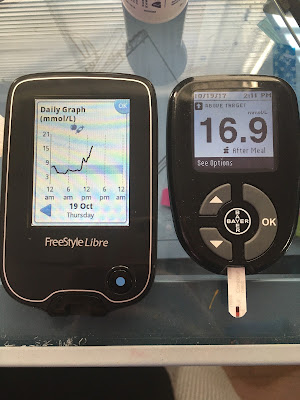Halloween + Diabetes

HAPPY HALLOWEEN!!! I love Halloween -the costumes, the candy, decorating the house, parties, and carving pumpkins- these are all great things. But most of all, I love to go trick-or-treating with my friends. I mean, who doesn't love getting free candy? This will be my first Halloween with diabetes, but I'm not really concerned about that. As long as I can still eat some candy, I'll be happy! I think that the best thing about getting all of these sweets is that you can use them as low treatments for the next couple of months! Think about the wonderful taste of bubbly, delicious chocolate exploding in your mouth. Mmmmm....! It almost makes me want to be low... almost. Moving on! I'm going to tell you right now, there will be at least one person on Halloween night that sees you eating a candy bar and lectures you about it. It is most likely because they are thinking of Type 2 Diabetes, not Type 1. They probably don't even know that Type 1 exists! I kno...



